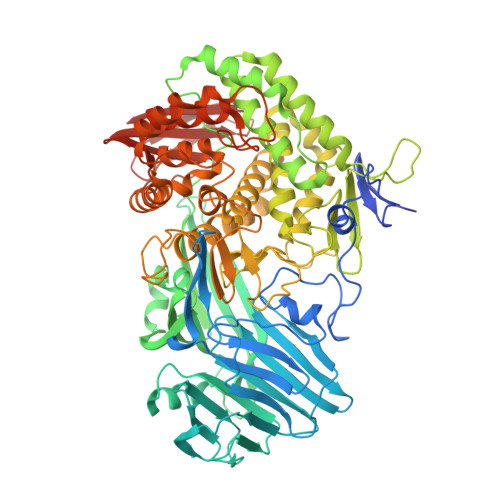Structural Analysis of a Family 81 Glycoside Hydrolase Implicates Its Recognition of beta-1,3-Glucan Quaternary Structure.
Pluvinage, B., Fillo, A., Massel, P., Boraston, A.B.(2017) Structure 25: 1348-1359.e3
- PubMed: 28781080
- DOI: https://doi.org/10.1016/j.str.2017.06.019
- Primary Citation of Related Structures:
5T49, 5T4A, 5T4C, 5T4G - PubMed Abstract:
Family 81 glycoside hydrolases (GHs), which are known to cleave β-1,3-glucans, are found in archaea, bacteria, eukaryotes, and viruses. Here we examine the structural and functional features of the GH81 catalytic module, BhGH81, from the Bacillus halodurans protein BH0236 to probe the molecular basis of β-1,3-glucan recognition and cleavage. BhGH81 displayed activity on laminarin, curdlan, and pachyman, but not scleroglucan; the enzyme also cleaved β-1,3-glucooligosaccharides as small as β-1,3-glucotriose. The crystal structures of BhGH81 in complex with various β-1,3-glucooligosaccharides revealed distorted sugars in the -1 catalytic subsite and an arrangement consistent with an inverting catalytic mechanism having a proposed conformational itinerary of 2 S 0 → 2,5 B ‡ → 5 S 1 . Notably, the architecture of the catalytic site, location of an adjacent ancillary β-1,3-glucan binding site, and the surface properties of the enzyme indicate the likely ability to recognize the double and/or triple-helical quaternary structures adopted by β-1,3-glucans.
Organizational Affiliation:
Department of Biochemistry and Microbiology, University of Victoria, Victoria, BC V8W 3P6, Canada.


















